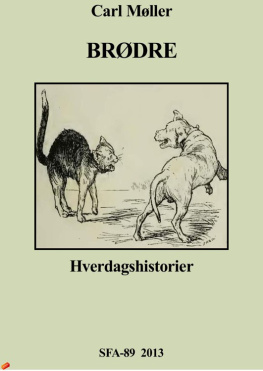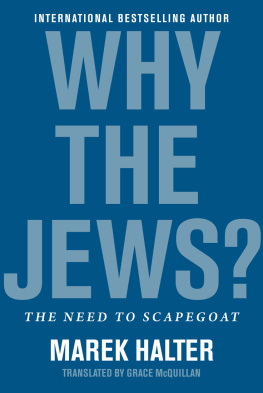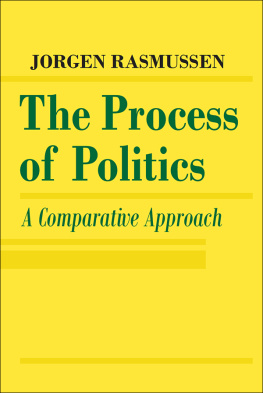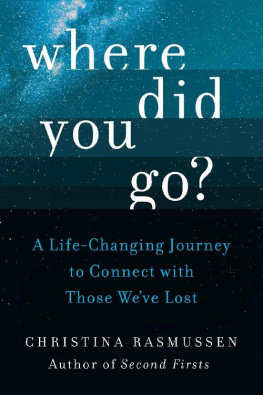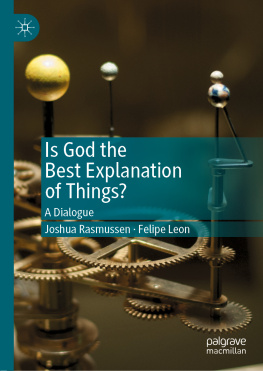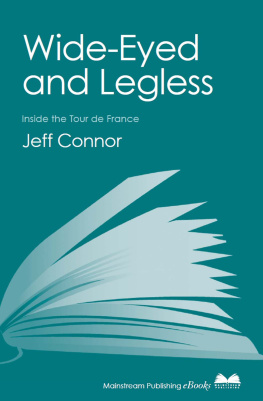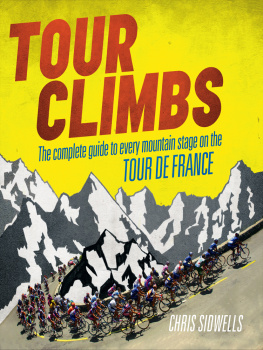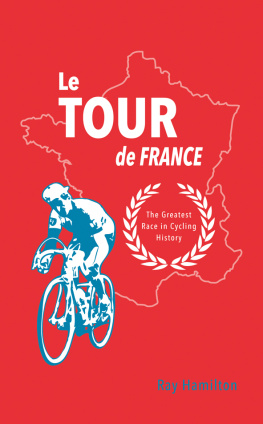VERNER MLLER
The Scapegoat
About the expulsion of Michael Rasmussen
from the Tour de France 2007 and beyond
Preface
I first met Michael Rasmussen on 27 September 2008 in the Hotel Le Robinie in the little Italian village of Solbiate Olano. We had arranged that I should pick him up and then take him to Lake Garda where he lives. He would then show me the documents in the case against him. This was Rasmussens idea, as he felt awkward about taking the file to Varese where I was heading to watch the road racing World Championships. At his place we could look through the materials relating to his case undisturbed, and at the same time get a first face-to-face impression of each other.
The situation was complicated. Rasmussen was banned. He had been caught lying about his whereabouts, which looked like an attempt to circumvent the doping control system and avoid the out of competition doping controls. Just as he thought he was about to seal his first Tour de France victory he was suspended by his team and then sacked for a reason he later went to court to prove was a lie.
He was convinced that he had been treated unfairly. He also felt that the press, which had shown exceptional and sustained interest in his warnings, were behind his misery. Afterwards he had tried without success to persuade journalists to look more closely at his case. But as his lifelong dream had been ruined it was crucial for him to have his story told from a broader perspective. The underhand dealings that had taken place should be revealed to a wider audience before the case was forgotten. This was his motivation for showing me his files.
Since 1998 I have devoted a significant amount of research time to doping in sport and I have reached the opinion that anti-doping work is necessary if sport is not to develop into a life-threatening competition about who dares to run the greatest health risks wins. Nevertheless, I understand the temptation to dope and I think that doping cases ought to be treated following the same principles as any other sporting rule infringement. A suspension in handball, for instance, means two minutes on the bench just as a suspended footballer sits out the rest of the game and may have one-or-more match bans depending on the nature of the offence. A doping penalty generally means a two-year ban. In any case the penalty is arbitrary. It is meaningless to discuss whether or not it is fair that a handball player is sanctioned less harshly than a football player. The crucial thing is that athletes know the rules for their respective sports, can rely in them, and accept punishment if they violate them.
When Rasmussens warnings for inadequate or incorrect information about his whereabouts were revealed, I was interviewed to the Danish TV channel TV2. During the interview I maintained without hesitation that there was no case to be made. Unfortunately for Rasmussen it soon became apparent that there was more than enough for the sensationalist media to get their teeth into. Over the following days, with the press increasingly against him, I reiterated my position: from a sporting point of view there is no case to be made. No matter what occurred subsequently it was still my viewpoint when we met in Italy, and as will become clear my opinion remains unchanged. The reason why I approached the meeting with Rasmussen with some trepidation was rooted in a different place.
As a researcher it is okay to be mistaken. Other people may falsify your findings, you may misinterpret your material, or be cut down in discussions because you have forgotten to take a number of arguments into consideration, without being dismissed. But as soon as you sacrifice credibility as a researcher and abuse your position to serve private, political, or ideological interests you put your head on the block. The task I was about to take on to analyse the case from the penalized athletes perspective was controversial. I was going to use Rasmussens material and it was clear that he had a reason to hand it over to me. I should listen to his version of the case, but also other involved parties. It was important to make it clear from the start that I did not have the freedom of the journalist to pursue a particular angle by omitting things that could nuance the picture. Following the tip-off about Rasmussens warnings various journalists had created sensational stories about one unscrupulous human beings lies and betrayals. As journalists they had the freedom to angle the story. That is to describe the detail without taking into account the wider context. Or to put it another way, to present information in such a way that the reader does not have sufficient background to make their own informed decisions. Although as a researcher you also have to choose a perspective on your issue, your freedom does not go so far as to omit significant information because it makes your analysis less unambiguous. My primary interest was in the material that did not make it into the press reports, because it could muddy the picture and spoil the simple storyline of true and false, and good and evil. But I could of course not deny that the main actor had given incorrect information and he ended-up being banned for two years as a result. In other words Rasmussen should not expect a one-sided presentation of his point of view. That premise I made clear from the start. Just write the book as you like, he responded. This is what I have done.
Some will probably read this book as advocating Rasmussens case. This is not my intention. However, as may already be evident, the book is marked by a strong personal interest in cycling and the dehumanisation that anti-doping has led to, particularly in this sport. It is a confrontation with the exorcism that has occurred following the Festina affair in 1998, in which journalists and bemused leaders of sporting organizations, contrary to their stated standpoints, have themselves undermined the ideals of fair play and the level playing field. I watched the Rasmussen case unfold uncertain about what motives lay behind the actions. Intuitively I sided with Rasmussen. During the work on this book it has become clear why. It was a defence of reason against the unsporting decisions that have marred cycling in recent years.
Overview
In chapter one I begin with my experience of the drama of the Tour de France 2007 and try to describe how the Tour was about to disintegrate as a sporting event in the attempt to remedy the doping problem. Referring to the numerous doping revelations that have come to light since 1998 I explain in Chapter 2 why I find the question of whether Rasmussen was doping or not, indifferent. In chapter 3 I present the series of events leading up to Rasmussens ban. In chapter 4 I analyse the warnings and show that Rasmussen did not enter the Tour with too many warnings, yet he was subjected to especially negative treatment by the anti-doping authorities. Without the media exposure of the warnings and the subsequent pressure, Rasmussen would undoubtedly have won the race. In other words the media played a crucial role in the sporting outcome, and in chapters 5 and 6 I consider the journalistic ethos behind this turn of events. The Danish Cycling Federation (DCU) explained that Rasmussen was excluded from the National team and their public exposition of this during the Tour as a result of breaches of their ethical code. The code is not public, but on the basis of the DCU leaderships public announcements I try and tease out the DCUs ethical values. After this I turn to the aftermath. In chapter 8 the civil aftermath between Rasmussen and Rabobank and in chapter 9 the sporting aftermath and the foundation for his two-year ban is analysed, after which chapter 10 documents his fight against the extra penalty he was given by the International Cycling Union (UCI) and the DCU with their attempts to obstruct his return to cycling. In chapter 11 I address Rasmussens lies, try to account for the relationship between lies and sport, and explain why they became fable. In a short final chapter I conclude my considerations of the case from an anti-doping perspective before I close this English version with an epilogue that presents the reception of the book and what has come to light since it was first published.
Next page

